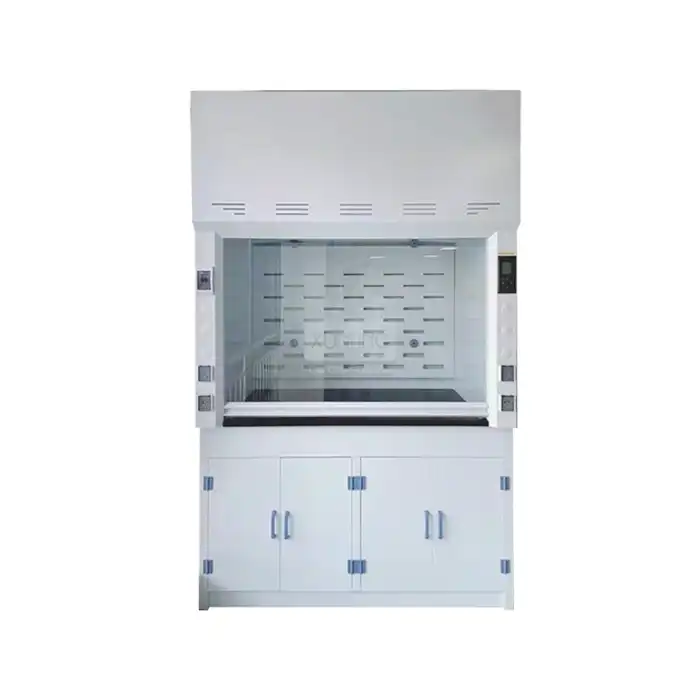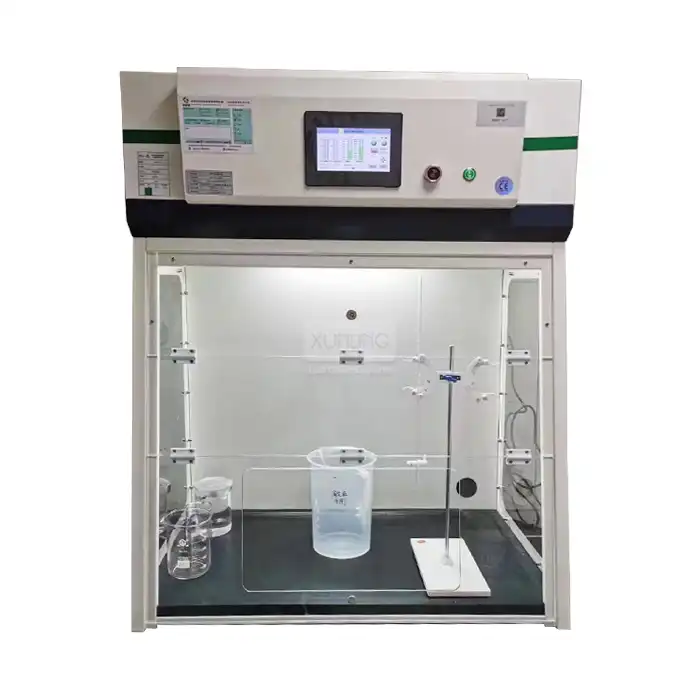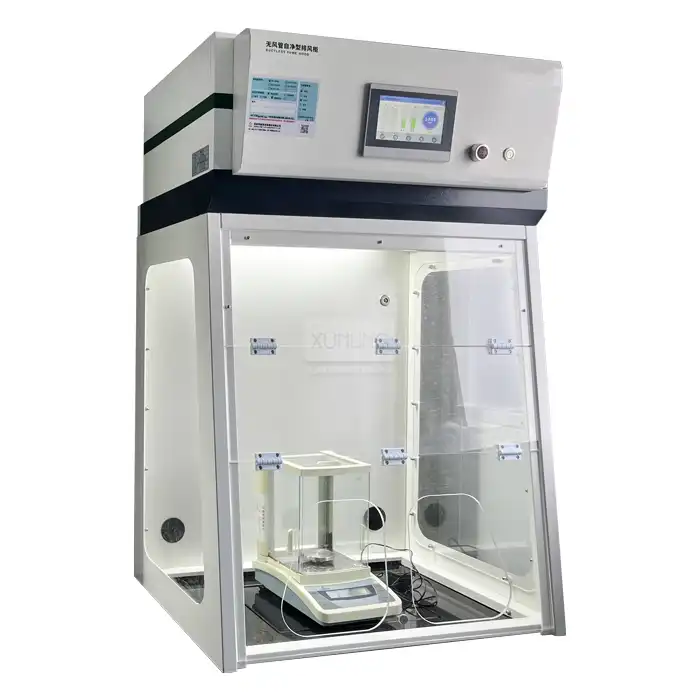
How Should I Properly Use a Chemical Vent Hood?
2025-07-18 17:24:47
Chemical vent hoods, also known as Fume Hoods or laboratory hoods, are essential safety equipment in laboratories that handle hazardous chemicals. These specialized ventilation systems are designed to protect laboratory personnel by capturing, containing, and expelling chemical vapors, gases, and aerosols. Proper use of a chemical vent hood is crucial for maintaining a safe working environment in any laboratory setting. By creating a physical barrier between hazardous materials and the user, along with continuous airflow that directs contaminants away from the breathing zone, chemical vent hoods significantly reduce exposure risks. Understanding the correct operational procedures, maintenance requirements, and safety protocols for these systems is fundamental for laboratory safety compliance and the protection of all personnel.
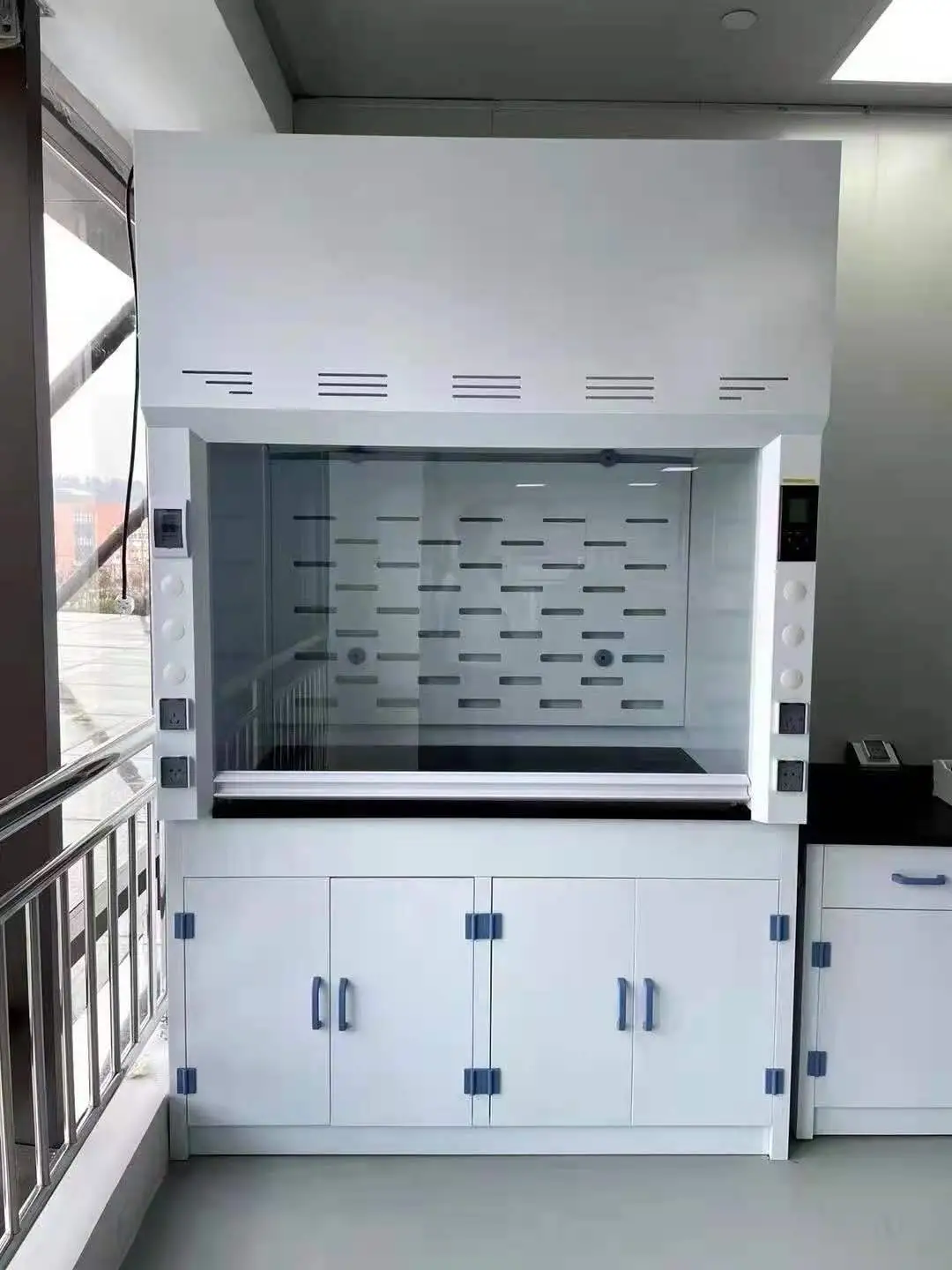
Essential Safety Protocols for Chemical Vent Hood Operation
The proper operation of a chemical vent hood requires adherence to specific safety protocols that ensure both user protection and optimal functionality of the equipment. These protocols encompass everything from pre-use inspection to appropriate work practices and emergency procedures.
Proper Preparation and Pre-Use Inspection
Before beginning any work with a chemical vent hood, thorough preparation and inspection are essential to ensure safe operation. Start by confirming that the ventilation system is functioning properly by checking the airflow indicator or monitoring device. Most modern chemical vent hoods are equipped with airflow sensors that provide visual or audible alerts if the airflow falls below safe levels. Verify that the sash is operating smoothly and can be positioned at the appropriate height as indicated by safety markings. Examine the interior of the chemical vent hood for cleanliness and remove any unnecessary equipment or materials that could disrupt airflow patterns. Ensure that all services (water, gas, vacuum) are functioning correctly and that electrical outlets are in good condition. Check that the lighting is adequate for your planned work. If the hood is equipped with an alarm system, test it to confirm it's operational. Additionally, review the specific requirements for the chemicals you plan to use, as some substances may require specialized hood configurations or additional safety measures. Only after completing this comprehensive inspection should you proceed with setting up your experiment within the chemical vent hood environment.
Proper Positioning and Working Distance
The effectiveness of a chemical vent hood is highly dependent on proper positioning of both the equipment and the user. Position all apparatus and materials at least 6 inches (15 cm) from the front edge of the hood to ensure they remain within the zone of maximum airflow efficiency. This "work zone" should be clearly marked on the work surface of most chemical vent hoods. Avoid placing large equipment or containers directly in front of the baffle openings at the back of the hood, as this can disrupt the balanced airflow pattern necessary for effective containment. When working with a chemical vent hood, maintain an appropriate working distance by standing directly in front of the hood without extending your head inside the hood plane during operations. The sash should serve as a physical barrier between you and potential chemical splashes or reactions. Position yourself so that you can comfortably reach all necessary materials without awkward stretching or leaning into the hood. Remember that air turbulence at the face of the chemical vent hood is one of the most common causes of containment failure, so avoid rapid movements, walking quickly past the hood, or creating other air disturbances near the hood opening. By maintaining proper positioning and working distance, you significantly enhance the protective capabilities of your chemical vent hood and reduce exposure risks.
Emergency Response and Contingency Planning
Developing comprehensive emergency response protocols for chemical vent hood operations is an essential aspect of laboratory safety. Every laboratory should have clearly documented procedures for responding to various scenarios including power failures, ventilation system malfunctions, chemical spills, or unexpected reactions within the chemical vent hood. These procedures should be posted near each hood and regularly reviewed with all laboratory personnel. In the event of a chemical vent hood failure during an experiment, immediately secure all chemical containers if it is safe to do so, lower the sash completely, and evacuate the area if hazardous vapors are present. Report the malfunction immediately to laboratory management and facilities maintenance. For chemical spills within the hood, contain the spill using appropriate spill kits while maintaining the hood's ventilation to control vapors. Always document any incidents involving the chemical vent hood, including near-misses, as these reports can help identify potential system weaknesses before they lead to serious accidents. Regular drills practicing these emergency procedures ensure that all laboratory personnel can respond quickly and effectively when faced with unexpected situations, minimizing both risk exposure and potential damage to facilities and equipment.
Advanced Techniques for Optimal Chemical Vent Hood Performance
Beyond basic safety protocols, understanding advanced operational techniques can significantly enhance the effectiveness and efficiency of chemical vent hood systems. These techniques focus on airflow management, equipment placement, and task-specific optimizations.
Airflow Optimization Strategies
Maximizing the protective capabilities of a chemical vent hood requires careful attention to airflow dynamics. The primary function of a chemical vent hood is to create a negative pressure zone that draws potentially harmful vapors away from the user and into the exhaust system. To optimize this process, maintain the sash at the minimum height necessary for comfortable work, as this increases face velocity and improves containment. Many chemical vent hoods feature horizontal markings indicating the maximum safe working height for different types of operations. Understanding the airflow pattern within your specific chemical vent hood model is crucial. Most modern hoods employ a combination of bypass and baffle systems to create uniform airflow across the work surface. Avoid blocking these baffles with equipment or materials, as this can create dead zones where contaminants may accumulate. When arranging apparatus within the hood, create an elevated airflow path beneath larger items using stands or blocks to ensure air can flow freely around all sides. For particularly volatile or hazardous chemicals, consider using secondary containment trays positioned toward the rear of the hood where airflow is typically strongest. Regularly verify airflow performance using visualization techniques such as smoke tests or airflow indicators, especially after repositioning equipment or changing experimental setups. By implementing these airflow optimization strategies, you can significantly enhance the protective performance of your chemical vent hood system, creating a safer laboratory environment for all personnel.
Equipment and Material Management
Effective equipment and material management within a chemical vent hood is essential for maintaining optimal performance and safety. Begin by minimizing the amount of equipment and chemicals stored inside the hood, as cluttered hoods experience reduced airflow efficiency and increased turbulence. Only materials and equipment actively being used in current experiments should be present in the chemical vent hood work area. Create an inventory system for tracking what enters and exits the hood to prevent unnecessary accumulation of items. When arranging equipment within the chemical vent hood, consider both the airflow patterns and the nature of your experimental procedures. Place heat-generating equipment like hot plates, heating mantles, or Bunsen burners toward the rear of the hood but not directly against the back wall, allowing for proper air circulation while minimizing the risk of creating air currents that could draw contaminants out of the hood. Elevate large pieces of equipment approximately 2 inches from the work surface using laboratory jacks or blocks to allow airflow underneath. Position chemical containers at least two inches from the front edge of the hood and avoid storing chemicals in the hood when not in use. Use secondary containment trays for liquids to contain potential spills. Cable management is another important consideration; route electrical cords and service lines through designated ports rather than under the sash, as this can prevent proper sash closure and compromise containment. By applying these equipment and material management practices, you can maintain the designed performance characteristics of your chemical vent hood and ensure reliable protection during laboratory operations.
Specialized Applications and Adaptations
Chemical vent hoods can be adapted for specialized applications that require modifications to standard operating procedures. For particularly hazardous substances like highly toxic chemicals, volatile carcinogens, or radioactive materials, additional containment measures may be necessary. These might include using a hood with a higher face velocity (typically 100-120 fpm instead of the standard 80-100 fpm), installing secondary HEPA filtration systems, or employing dedicated hoods with specialized construction materials resistant to specific chemicals. For perchloric acid work, specialized perchloric acid hoods with wash-down systems are essential to prevent the accumulation of potentially explosive perchlorate crystals in the exhaust system. Similarly, work with radioisotopes requires dedicated radioisotope hoods with non-porous, easy-to-decontaminate surfaces and specialized filtration systems. When working with nanomaterials, standard chemical vent hoods may need to be supplemented with HEPA filtration to capture particulates too small for conventional filtration systems. For procedures generating significant heat or requiring open flames, special attention must be paid to the hood's fire suppression capabilities and the potential impact of heat on airflow patterns within the chemical vent hood. Some laboratories employ variable air volume (VAV) hood systems that automatically adjust exhaust rates based on sash position, providing energy savings while maintaining safe face velocities. Understanding these specialized applications and making appropriate adaptations to standard chemical vent hood protocols ensures that even the most challenging laboratory procedures can be conducted safely and effectively while maintaining appropriate containment of hazardous materials.
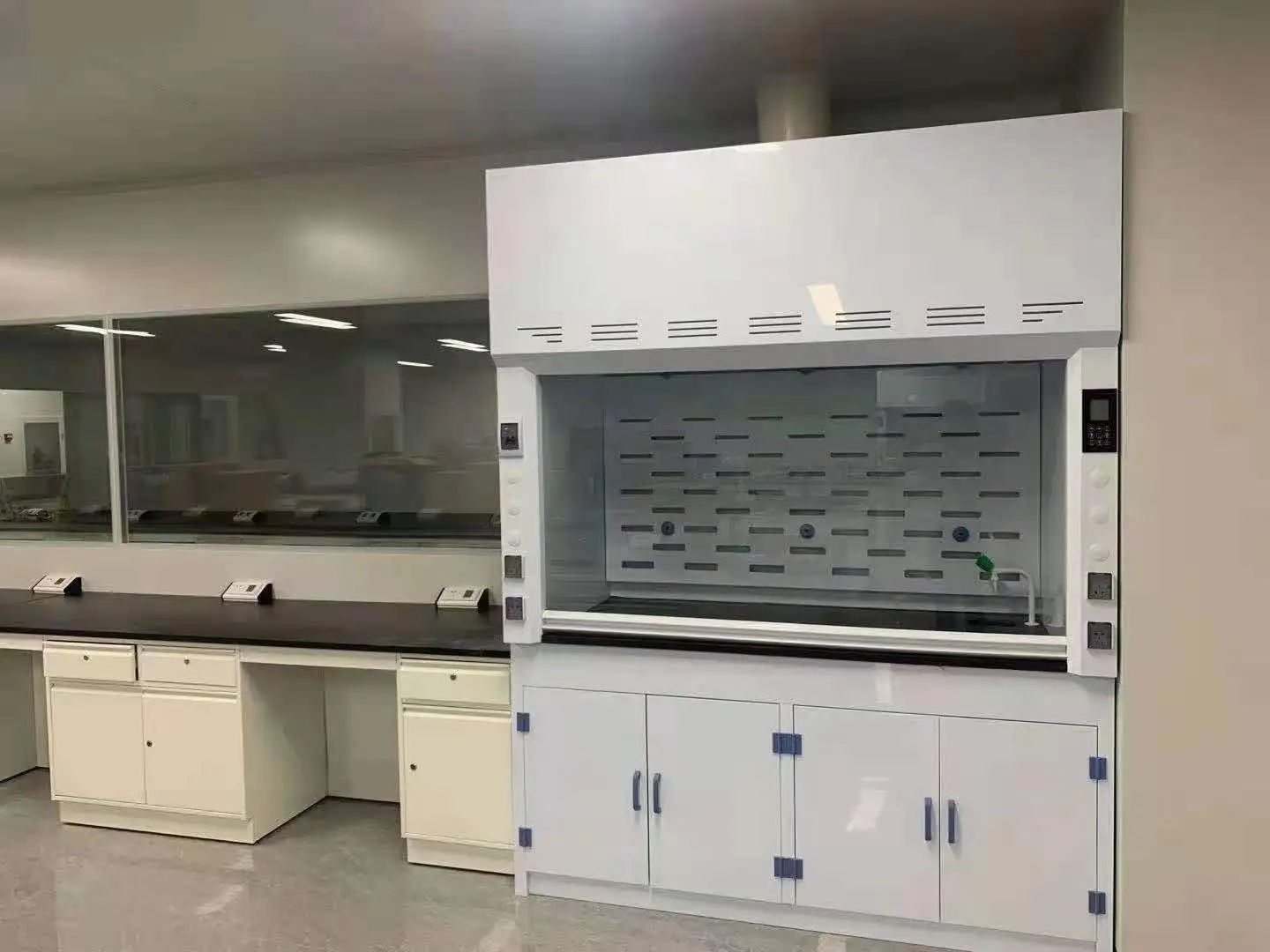
Maintenance and Compliance for Long-Term Safety
Ensuring the long-term safety and effectiveness of chemical vent hoods requires diligent attention to maintenance procedures and regulatory compliance. A well-maintained hood not only provides better protection but also operates more efficiently and has a longer service life.
Regular Certification and Testing Protocols
Chemical vent hoods require regular certification and testing to verify their continued safe operation. Most regulatory agencies and safety standards, including those from OSHA and ANSI/ASHRAE, recommend annual certification at minimum, with some facilities implementing more frequent testing schedules based on usage patterns and risk assessments. These certification procedures typically include face velocity measurements using calibrated anemometers to verify that airflow rates meet the recommended 80-120 feet per minute (fpm) standard across the hood opening, depending on the specific application and hood design. Comprehensive certification also includes smoke pattern testing to visualize airflow and identify potential dead spots or turbulence, measurement of containment using tracer gas techniques, and inspection of physical components like sash operation, baffle adjustments, and exhaust systems. Modern chemical vent hood certification may also evaluate the hood's performance under various conditions, such as with different sash positions or with simulated experimental setups in place. The certification process should be performed by qualified professionals using calibrated equipment, and detailed records of all test results should be maintained. Each chemical vent hood should display a current certification label indicating the date of testing, measured face velocity, and the date when recertification is due. Regular certification not only ensures safety but also helps identify potential issues before they become serious problems, allowing for preventative maintenance that can extend the useful life of these critical safety systems.
Troubleshooting Common Issues
Even well-maintained chemical vent hoods can develop performance issues that require prompt attention and troubleshooting. One common problem is insufficient face velocity, which may result from clogged filters, exhaust fan issues, or imbalances in the building's ventilation system. If airflow indicators show inadequate performance, check for obstructions in the hood baffle system, verify that all access panels are properly secured, and ensure that the exhaust ducting is clear of blockages. Another frequent issue is uneven airflow distribution, which can create areas within the hood where containment is compromised. This problem often stems from improper positioning of equipment or from damaged or incorrectly adjusted baffles. Noise and vibration represent another category of chemical vent hood problems that may indicate mechanical issues with the exhaust fan, motor bearings, or ductwork connections. Unusual odors or evidence of chemical escape from the hood could indicate containment failure, possibly due to improper sash position, excessive turbulence at the hood face, or negative pressure issues in the laboratory environment. For hoods with integrated services like water, gas, or vacuum, leaks or pressure fluctuations require immediate attention. Digital control systems on modern chemical vent hoods may experience calibration drift or sensor failures that affect performance monitoring. When troubleshooting any of these issues, document all symptoms and attempted remedies, and don't hesitate to involve facilities management or specialized hood service technicians for complex problems. Remember that a malfunctioning chemical vent hood should be clearly marked as out of service until repairs are completed and performance is verified through appropriate testing procedures.
Compliance with Regulatory Standards
Maintaining compliance with regulatory standards is a fundamental aspect of chemical vent hood management. In the United States, multiple regulatory bodies and professional organizations establish guidelines for hood performance and testing, including the Occupational Safety and Health Administration (OSHA), the National Fire Protection Association (NFPA), and the American National Standards Institute (ANSI) in collaboration with the American Society of Heating, Refrigerating and Air-Conditioning Engineers (ASHRAE). Standard ANSI/ASHRAE 110 provides detailed methods for testing Laboratory Fume Hood performance, while NFPA 45 addresses fire protection for laboratories using chemicals. Chemical vent hood compliance requires documentation of regular performance testing, maintenance records, and user training. Many institutions implement standard operating procedures (SOPs) for each hood, detailing appropriate use guidelines specific to the types of hazards managed in that particular hood. These SOPs should be readily available to all users and reviewed regularly. Risk assessments should be conducted when introducing new processes or chemicals to verify that existing chemical vent hood systems provide adequate protection. Institutions must also maintain records of employee training on proper hood use and emergency procedures. Environmental compliance is another consideration, as hood exhaust systems must meet local air quality regulations regarding emissions. Some chemical processes may require specialized filtration or scrubber systems to treat exhausted air before release. Regular audits of hood performance, documentation, and training records help ensure ongoing compliance with all applicable standards. By maintaining strict adherence to these regulatory requirements, laboratories can create safer working environments while avoiding potential citations, fines, or liability issues associated with non-compliance.
Conclusion
Proper use of chemical vent hoods is fundamental to laboratory safety, protecting users from harmful exposure to hazardous substances. By following the protocols outlined in this article—from pre-use inspection and proper positioning to emergency response planning and maintenance—laboratory personnel can maximize the effectiveness of these critical safety systems. Remember that a chemical vent hood is only as effective as its operation and maintenance allow it to be, requiring ongoing attention to performance, compliance, and best practices.
Ready to upgrade your laboratory safety with state-of-the-art chemical vent hood solutions? Xi'an Xunling Electronic Technology Co., Ltd. offers cost-effective, reliable, and user-friendly chemical vent hoods with comprehensive 5-year warranty coverage and 5-day delivery options. Our dedicated team provides exceptional OEM support, custom-made solutions, and one-stop service for all your laboratory furniture and equipment needs. Don't compromise on safety—Contact Us today at xalabfurniture@163.com to discover how our expertise can transform your laboratory environment!
References
1. American Chemical Society. (2023). Chemical Laboratory Safety and Security: A Guide to Developing Programs. Washington, DC: ACS Publications.
2. National Research Council. (2022). Prudent Practices in the Laboratory: Handling and Management of Chemical Hazards. National Academies Press.
3. Lindberg, R., & Harrison, J. (2023). Laboratory Ventilation Design and Operation: Modern Approaches to Chemical Fume Hood Management. Journal of Laboratory Safety, 18(2), 112-128.
4. Occupational Safety and Health Administration. (2024). Laboratory Safety Guidance: Chemical Vent Hood Requirements and Best Practices. Washington, DC: U.S. Department of Labor.
5. Anderson, K.L., & Chen, S.J. (2023). Performance Testing Methods for Laboratory Fume Hoods: A Comparative Analysis. Environmental Science & Technology, 57(4), 215-229.
6. International Organization for Standardization. (2024). ISO 17025:2024 General Requirements for the Competence of Testing and Calibration Laboratories. Geneva, Switzerland: ISO.







_1756093882793.jpg)

_1741166473547.webp)
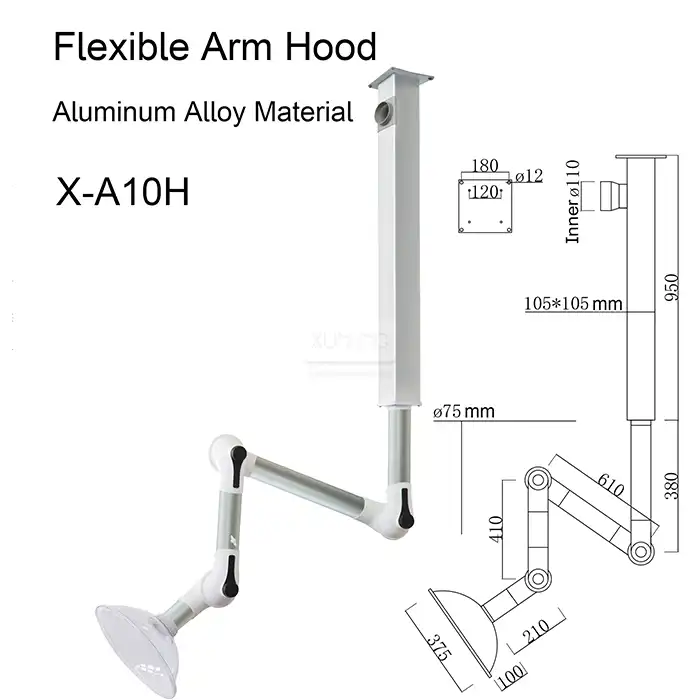
_1735552742845.webp)
